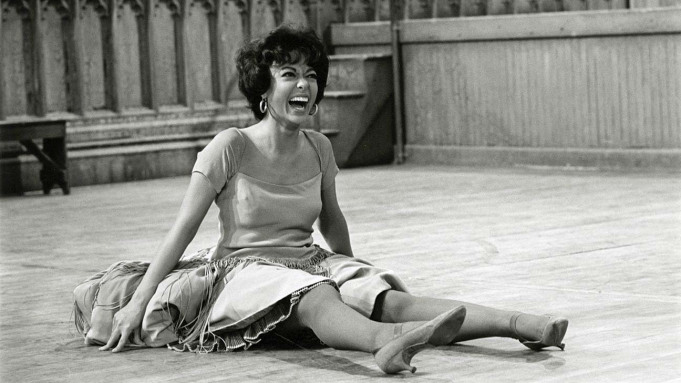Rita Moreno: Just a Girl Who Decided to Go for It (2021 | USA | 90 minutes | Mariem Pérez Riera)
A portrait of both a life and the history that its subject lived through, Rita Moreno: Just a Girl Who Decided to Go for It is the rare type of documentary that manages to capture the story of a central figure while never losing sight of the world around her.
The film, which I regretfully missed when it first premiered during the hustle and bustle of the first ever virtual Sundance, follows the life of the icon that is actress Rita Moreno from her early years all the way up to the present moment. As it goes into detail about how her departure from Puerto Rico informed her lengthy career, the narrative delicately weaves her history and life journey into the fabric of American culture.
Far too often, documentaries that attempt to be about both a person and a history can often end up losing sight of one at the expense of the other. You’ll end up coming away feeling like historical context was lost in order to learn more about the person or feel like the history subsumed the person who was living through it. What sets Rita Moreno: Just a Girl Who Decided to Go for It apart is the honesty through which director Mariem Pérez Riera views Moreno’s world. Not only does the direction literally take you into her present home, allowing her to reflect on her past, it does so with just the right mix of sentimentality and sadness about the pain she had to endure.
As Moreno puts her identity as a Puerto Rican front and center, she complicates the story of what it means to come from the island to mainland America. There is no joy in her arrival as she didn’t long for a new life and immediately misses her old one. She reveals that after leaving home, she never saw her brother again. This rejection of the tropes of the conventional immigrant story is a detail that is indicative of the documentary’s refreshingly honest approach.

It doesn’t sugarcoat or gloss over the pain in order to glamorize the supposed joys of coming to a new place, especially one that can be so cruel. It instead asks deeper questions about what toll that journey had on Moreno and how, when she arrived, she faced immense obstacles from people who viewed her with outright hostility. When she discusses the profound impacts of the slurs and hate she had to face, you see how she became convinced of her own lack of self worth. You also see a courage begin to take shape that, however admirable, should not have been required of her just to make her own way in a new place.
As the documentary makes its way through Moreno’s early career as a dancer, it reveals how that allowed her to both find an outlet through which to express herself and to also support her family. It makes for an experience that is both joyous and saddening as you see how she must grow up fast in order to survive. The abhorrent treatment and abuse she faces when beginning to make a career in the movies only deepens this feeling. Every story of how she was made to darken her skin in order to be the same character of the “island girl” is appropriately upsetting and the documentary does not shy away from examining why the racist caricatures were the only roles she could get.
Even when she does begin getting new opportunities and roles, they do not come without a price. As the interactions of intense disrespect begin to shift into stories of abuse and assault, the documentary really pulls back the curtain on the ugly horrors endemic to the outwardly glamorous world of Hollywood. Moreno speaks about these painful moments with a remarkable candor, including when she talks about how she got an illegal abortion when she became pregnant with Marlon Brando’s child. The procedure went horribly wrong and nearly killed her, something she recounts in detail. It is both harrowing and eye-opening, slowly easing out details audiences may not otherwise have known. It gives insight into her involvement in future activism.
It is a telling of the full picture of her life that makes the documentary so complex in a way that couldn’t be told in any other form. Yes, there are many fictionalized accounts of historic characters, though these biopics often focus on a seminal time period or flatten life stories into surface level narratives defined by trauma (looking at you The United States vs. Billie Holiday). Rita Moreno: Just a Girl Who Decided to Go for It avoids the trappings that come from working through a painful past. It shows all the pain, yes, while still balancing it with the triumphs that Moreno achieved. Nowhere is this more clear than with how the film excavates her breakout role in Westside Story.
This is where the documentary spends a large amount of time, but it is deservedly so as it is also where it is razor focused on specific details. It looks at certain lyrics of a song that denigrate Puerto Ricans with a critical eye, bringing up various perspectives on both why those words were chosen and the impact that they could have. It breaks down specific scenes where Moreno had to often smuggle in her own deeper meanings and dignity when the text of the film itself often robbed her of those. It is both a deconstruction of cinematic history and a look at her personal journey that makes for the most engaging part of the whole film.

If there were any particular hangups, it would be that the documentary can get lost in the world of certain talking heads who aren’t as interesting or engaging when they speak on Moreno’s life. To be specific, one Lin-Manuel Miranda gets a whole lot of screen time without adding much to the conversation. Frequently after he would make an appearance, I would struggle to identify what substance he actually brought in his statements. His presence is indicative of a problem where documentaries see a need to include as many famous voices as possible, which feels out of place considering that Miranda is actually a producer of the film rather than the most impactful voice to have talk on screen. Even as he isn’t necessary and sometimes even actively distracts from the story, he still got jammed in regardless.
Admittedly, my viewing of his role is influenced by the important criticism Miranda has faced about the lack of Afro-Latinx representation in his newest project In The Heights. I hesitate to even bring that conversation into this one, but separating the two films is all the more challenging since Moreno herself decided to rather clumsily jump in to defend Miranda. Not only did she inexplicably do so in the context of discussing this film, regrettably linking the project even further to Miranda, but a charitable description of her defense is that she essentially told people to just be silent about their concerns. Her response leaves a bad impression and only deepens the hang-ups I felt throughout the documentary.
Thankfully, the overall impression and impact of Moreno’s determination is far too bright to be dulled by even prolonged Miranda-infused distractions, whether they are on or off the screen. To see her life and work laid out in such a comprehensive way is enlightening in a way that can’t be taken away. The title itself demonstrates both her determination and her humility that the film captures perfectly. It is hard to imagine a more nuanced and powerful portrait of the icon than this one that gives her life a worthwhile deeper look.
Rita Moreno: Just a Girl Who Decided to Go for It is available in theaters beginning June 18.



